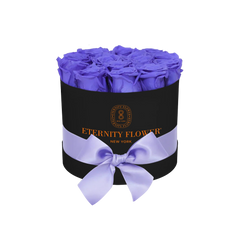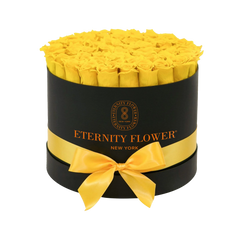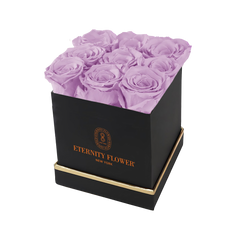In the vast tapestry of cultures that make up Asia, flowers are not just a feast for the eyes; they're imbued with deep symbolism and meaning. This article takes you on a fragrant journey through the gardens of Asia, where every bloom tells a story. Let's explore the fascinating world of Asian flowers and their meanings, and how these natural beauties convey messages of love, life, and luck.
The Language of Flowers: An Asian Perspective

In Asia, the language of flowers is a silent yet profound form of communication. This tradition, known as Hanakotoba in Japan, has its counterparts across the continent. It's a way of expressing feelings and conveying messages without words, where each flower and its color has a unique significance.
Read more: Flower That Represents Love: A Symbolic Journey of Blossoms
Cherry Blossoms: A Fleeting Beauty

Perhaps no other flower is as closely associated with Asian culture as the cherry blossom. Predominantly found in Japan, where it's known as Sakura, this flower symbolizes the transient nature of life. Its brief blooming period is a reminder to cherish life's fleeting moments. Cherry blossoms are a celebration of beauty, renewal, and the cyclical nature of existence.
Lotus: Purity Rises from the Mud

The lotus flower holds a special place in the hearts and cultures of several Asian countries, including India and Vietnam. Emerging pristine from murky waters, the lotus symbolizes purity, enlightenment, and rebirth. It's a powerful metaphor for the human condition: no matter the murkiness of our circumstances, we have the potential to rise above and bloom.
Chrysanthemums: The Sun's Embrace

In China, the chrysanthemum is revered for its ability to bloom in the autumn, defying the transition into winter. It symbolizes resilience, longevity, and fidelity. The flower is also celebrated during the Double Ninth Festival, where it's believed to have protective qualities. In Japan, the chrysanthemum is a symbol of the Emperor and the Imperial family, representing perfection and immortality.
Read more: Chrysanthemums Meaning: Symbolism Behind The Flower
Orchids: Exquisite Elegance

Across Asia, orchids are synonymous with beauty, luxury, and strength. In Confucian society, the orchid is a symbol of integrity, nobility, and friendship. Its subtle beauty and fragrance are considered reflective of refined elegance and inner strength. Orchids are a popular gift, conveying respect and deep affection.
Peonies: Prosperity and Good Fortune

Peonies are often referred to as the King of Flowers in Chinese culture, embodying wealth, honor, and high social status. The lush, full-bodied bloom is a favorite in Asian art and is often used in celebrations as a symbol of prosperity and good fortune. The peony is particularly associated with the city of Luoyang, where the Peony Festival showcases a dazzling array of these flowers each spring.
The Palette of Emotions: Most Popular Colors in Asian Flowers

The colors of Asian flowers are not just a feast for the eyes; they're a language in themselves, conveying deep emotions and messages. Each hue holds a unique place in the cultural and spiritual life of Asia, symbolizing different aspects of existence. Let's delve into the most popular colors in Asian flowers and the rich meanings they carry.
Red: The Color of Prosperity and Joy
Red is perhaps the most celebrated color in Asian flowers, symbolizing good fortune, joy, and happiness. It's a color that's prominently featured in celebrations, especially weddings and New Year festivities. The red peony, for example, is highly regarded in Chinese culture for bringing luck and prosperity, while the red chrysanthemum signifies love and deep passion in Japan.
Read more: Roses Color Meaning: Every Hue Explained in Detail
White: Purity and Mourning
White flowers hold a dual significance across Asia. On one hand, they represent purity, innocence, and perfection, making them a popular choice in spiritual ceremonies. The white lotus, for instance, is an emblem of purity and enlightenment in Buddhist symbolism. On the other hand, white is also the color of mourning and is often used in funerals to honor the departed.
Yellow: Imperial Majesty and Friendship
Yellow, once reserved for the emperor and his family in China, symbolizes royalty, respect, and a high social status. It's also a color of warmth, representing friendship and new beginnings. The yellow chrysanthemum, for example, is a token of the sun's power and the beauty of life in both China and Japan.
Pink: Gentle Affections and Springtime
Pink flowers are beloved across Asia for their gentle beauty and association with spring and renewal. The cherry blossom, or Sakura, in its soft pink hues, epitomizes the arrival of spring in Japan, symbolizing the fleeting nature of life and the youthful joy of new beginnings.
Blue and Purple: Tranquility and Nobility
Blue and purple flowers are treasured for their calming effects and association with nobility and wisdom. The blue orchid, for example, represents tranquility and harmony, while purple flowers, such as the lavender chrysanthemum, symbolize dignity and admiration.
The colors of Asian flowers weave a complex emotional and cultural tapestry, with each hue telling its own story. From the passionate reds to the serene blues, the spectrum of colors in Asian blooms is a testament to the continent's rich heritage and the universal language of flowers. As we explore the gardens of Asia, let's appreciate not just the visual splendor of these colors but also the deep meanings they convey.
Asian Flowers and Their Meanings: A Cultural Legacy

This exploration of Asian flowers and their meanings offers just a glimpse into the rich cultural tapestry of the continent. Flowers are a universal language, but in Asia, they whisper tales of the past, present, and future, carrying messages of hope, resilience, and beauty. Whether it's the delicate cherry blossom, the resilient lotus, the regal chrysanthemum, the elegant orchid, or the prosperous peony, each bloom is a symbol, a tradition, and a piece of cultural identity.
Conclusion
Incorporating these flowers into daily life, whether through garden cultivation, art, or festival celebrations, is a way to connect with the heritage and values they represent. As we admire these blooms, let's remember the stories they tell and the wisdom they hold. Asian flowers and their meanings are not just botanical wonders; they are timeless reminders of life's most precious lessons.


























